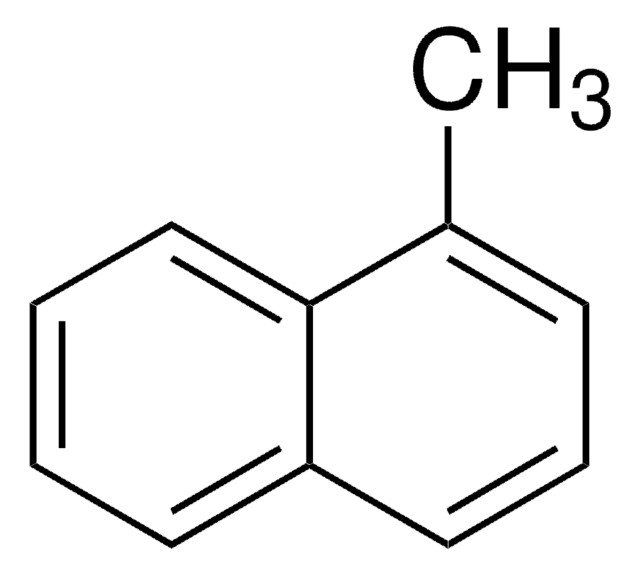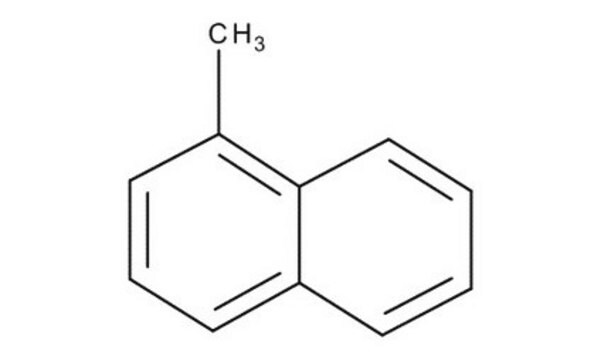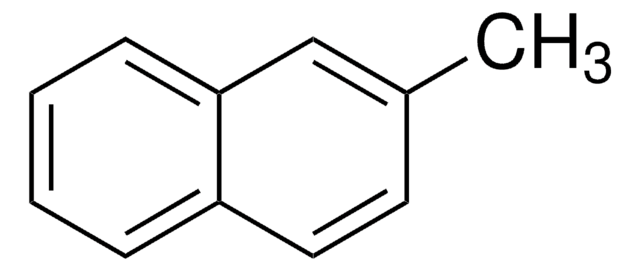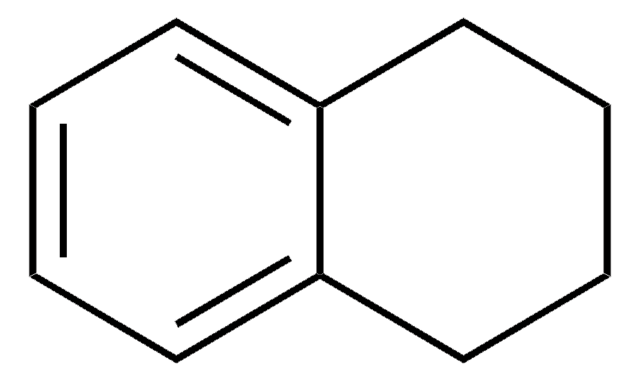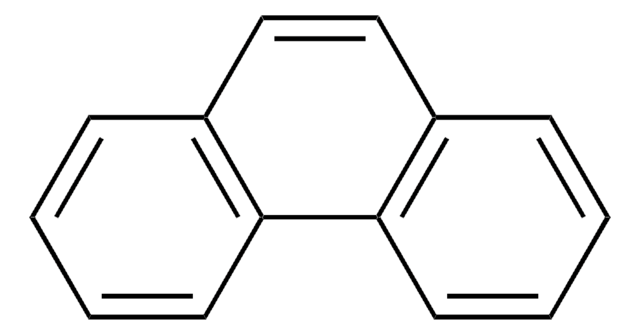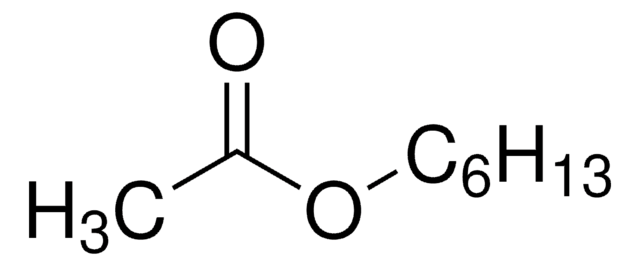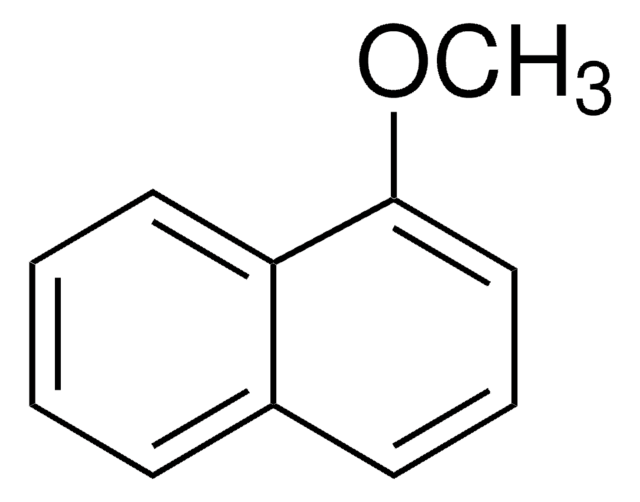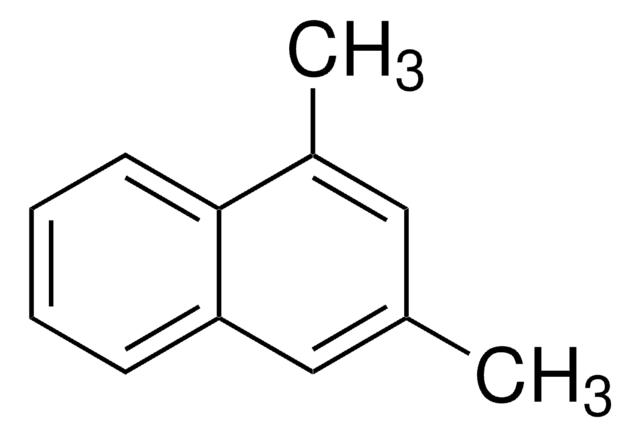45795
1-Methylnaphthalene
analytical standard
About This Item
Productos recomendados
grado
analytical standard
Nivel de calidad
Ensayo
≥98%
temp. de autoignición
984 °F
caducidad
limited shelf life, expiry date on the label
técnicas
HPLC: suitable
gas chromatography (GC): suitable
índice de refracción
n20/D 1.615 (lit.)
bp
240-243 °C (lit.)
mp
−22 °C (lit.)
densidad
1.001 g/mL at 25 °C (lit.)
aplicaciones
environmental
Formato
neat
cadena SMILES
Cc1cccc2ccccc12
InChI
1S/C11H10/c1-9-5-4-7-10-6-2-3-8-11(9)10/h2-8H,1H3
Clave InChI
QPUYECUOLPXSFR-UHFFFAOYSA-N
¿Está buscando productos similares? Visita Guía de comparación de productos
Aplicación
The 1-Methylnaphthalene may find the following uses:
- Study of surface and electronic features of fluorinated TiO2 and their influence on the photocatalytic degradation of 1-methylnaphthalene
- Thermal decomposition of 1-Methylnaphthalene in a batch reactor
- Catalytic conversion of tar from hot coke oven gas using 1-methylnaphthalene as a tar model compound
- Hydrocracking of 1-methylnaphthalene to benzene, toluene, and xylene using high metal–acid balance and selective hydrogenation activity catalysts
Productos recomendados
Palabra de señalización
Danger
Frases de peligro
Consejos de prudencia
Clasificaciones de peligro
Acute Tox. 4 Oral - Aquatic Chronic 2 - Asp. Tox. 1
Código de clase de almacenamiento
10 - Combustible liquids
Clase de riesgo para el agua (WGK)
WGK 2
Punto de inflamabilidad (°F)
179.6 °F - closed cup
Punto de inflamabilidad (°C)
82 °C - closed cup
Equipo de protección personal
Eyeshields, Faceshields, Gloves, type ABEK (EN14387) respirator filter
Elija entre una de las versiones más recientes:
Certificados de análisis (COA)
¿No ve la versión correcta?
Si necesita una versión concreta, puede buscar un certificado específico por el número de lote.
¿Ya tiene este producto?
Encuentre la documentación para los productos que ha comprado recientemente en la Biblioteca de documentos.
Los clientes también vieron
Protocolos
GC Analysis of Polynuclear Aromatic Hydrocarbons (PAHs) in Salmon on SPB®-608 (20 m x 0.18 mm I.D., 0.18 µm) after QuEChERS Cleanup using Supel™ QuE Z-Sep, Fast GC Analysis
Protocol for GC Analysis of Hydrocarbons in Gasoline on Petrocol® DH
GC Analysis of Hydrocarbons in Gasoline on Petrocol® DH, Isothermal
US EPA Method 8270 (Appendix IX): GC Analysis of Semivolatiles on Equity®-5 (30 m x 0.25 mm I.D., 0.50 μm)
Nuestro equipo de científicos tiene experiencia en todas las áreas de investigación: Ciencias de la vida, Ciencia de los materiales, Síntesis química, Cromatografía, Analítica y muchas otras.
Póngase en contacto con el Servicio técnico